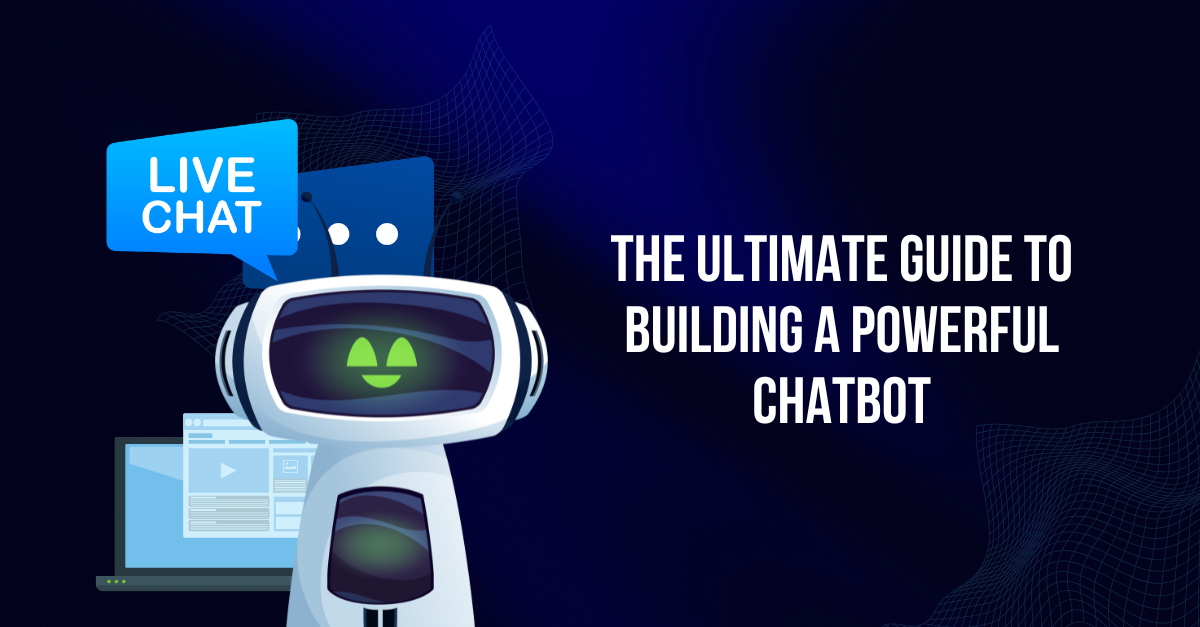The ultimate guide to building a powerful chatbot
Chatbots are revolutionizing how businesses interact with customers, offering 24/7 support and automating common tasks. To succeed, it’s crucial to understand how to build a chatbot that meets your business needs.
Table of Contents
What is a Chatbot?
A chatbot is a software tool designed to simulate conversations with users. It helps businesses handle routine customer queries and automate responses, thus improving efficiency.
Why do businesses need chatbots?
The benefits of chatbots for business are:
- Cost reduction: Chatbots automate repetitive tasks, reducing the need for large customer service teams.
- Better engagement: Chatbots offer instant, accurate responses to users, increasing satisfaction.
- Data insights: Interactions with chatbots provide valuable data that can guide business decisions.
Steps to build a successful chatbot
How do you build a chatbot? There are several essential steps to ensure that your chatbot is functional and effective for your business needs.
Define the purpose of your chatbot
Start by determining what your chatbot will do. Will it answer questions, assist in shopping, or provide customer support? Define its role clearly to ensure it aligns with your business goals.
Choose between rule-based or ai-driven development
When learning how to build a chatbot, the first decision is whether you need a rule-based or AI-powered chatbot:
- Rule-based chatbots: These chatbots operate based on predefined rules and simple scripts.
- AI chatbot development: AI chatbots use natural language processing (NLP) to intelligently understand and respond to user queries.
Select the right development tools
Choose the right tools to create a successful chatbot that fits your needs. Some of the best tools for creating chatbots include:
- Dialogflow: Ideal for developing AI-powered chatbots with advanced NLP capabilities.
- Microsoft Bot Framework: Great for building complex, enterprise-grade chatbots.
- ChatGPT API: Provides powerful conversational AI for more natural, human-like interactions.
- ManyChat: Focuses on social media integrations and marketing use cases.
Design a logical conversation flow
Effective chatbot design starts with creating a conversation flow. Structure your chatbot to handle common queries and guide users logically to their desired outcome.
- Train your chatbot: If you’re working on AI Chatbot Development, training your chatbot with high-quality data is crucial. The more relevant and accurate the data, the better the chatbot will understand user queries and respond appropriately.
- Test your chatbot: Before launching, thoroughly test your chatbot in real-world scenarios. This helps to identify potential issues and ensure the chatbot performs as expected.
AI chatbot development – Key advantages
AI Chatbot Development has become a popular choice due to its many advantages:
- Personalized interactions: AI chatbots offer more personalized responses by analyzing user input and context.
- Continuous improvement: AI-based chatbots can learn and improve over time, making them more efficient.
- Advanced problem solving: Unlike rule-based chatbots, AI chatbots can handle more complex queries and provide deeper insights.
Benefits of chatbots for business
Incorporating chatbots into your business provides several benefits:
- Increased efficiency: Chatbots handle customer queries instantly, reducing wait times and improving response speed.
- Better customer service: With 24/7 availability, chatbots ensure customers always have someone to turn to.
- Scalability: As your business grows, chatbots can scale easily to handle more inquiries without an additional workforce.
What's next in Chatbots
The future of chatbots is filled with exciting possibilities, including:
- Voice-activated chatbots: Voice-based interactions are rising, enabling users to speak instead of typing queries.
- Emotion detection: Some chatbots are starting to analyze user emotions and adjust responses accordingly for better engagement.
- IoT integration: Chatbots increasingly connect with Internet of Things (IoT) devices for enhanced functionality.
To create a powerful chatbot, it’s essential to choose the right tools, define your objectives clearly, and ensure the chatbot is continually optimized. Whether you’re working on AI Chatbot Development or using rule-based systems, a well-designed chatbot can greatly enhance customer engagement, improve business efficiency, and provide 24/7 support. Invest in building your chatbot today to keep up with the evolving digital landscape and provide exceptional customer service.
Keep an eye out! Novas Arc is developing a next-level chatbot that will redefine customer interactions for businesses worldwide. AI and Automation will drive this revolutionary shift in customer service.
FAQs
Q1. How do I create my chatbot?
To create your chatbot, follow these steps:
- Define the purpose: Determine what tasks your chatbot will handle (e.g., customer support, lead generation).
- Choose the right platform: Select a development platform or framework like Dialogflow, ManyChat, or Microsoft Bot Framework.
- Design conversations: Plan how your chatbot will interact with users by creating conversation flows.
- Train your chatbot: For AI chatbots, train them using relevant data so they can handle a variety of user inputs.
- Test and optimize your chatbot extensively and refine its responses based on user interactions.
- Deploy and monitor: Once you’re satisfied with its performance, deploy it and monitor its effectiveness.
Q2. Which chatbot is more powerful than ChatGPT?
While ChatGPT is a highly capable AI chatbot, some specialized chatbots might be considered “more powerful” depending on the context:
- Google’s Gemini: Offers advanced conversational capabilities and deep integration with Google’s search engine.
- Anthropic’s Claude: Known for safety and ease of use, focusing on human-like interactions.
- GPT-4 (by OpenAI): The latest iteration of ChatGPT’s underlying model, which is even more powerful and accurate than its predecessors.
However, a chatbot’s “power” largely depends on its intended use, domain knowledge, and user-specific customization.
Q3. How do I make an advanced AI chatbot?
To build an advanced AI chatbot, follow these steps:
- Select AI Technology: Choose an AI framework, such as TensorFlow, PyTorch, or GPT-3/4, to develop sophisticated NLP capabilities.
- Leverage Natural Language Processing (NLP): Use NLP to help the chatbot understand and generate human-like language.
- Integrate APIs and Databases: Enable your chatbot to pull in real-time data and handle complex queries through APIs and databases.
- Train on large datasets: Use vast datasets to train the chatbot and improve its accuracy and efficiency over time.
- Implement machine learning: Allow the chatbot to “learn” from interactions, refining its answers based on user feedback.
- Regularly optimize: Continuously update the model with new data and use performance metrics to make improvements.
Q4. Is chatbot profitable?
Yes, chatbots can be highly profitable, especially when used for automation. Here’s how:
- Cost savings: Chatbots reduce the need for large customer service teams, saving money on salaries and resources.
- Increased efficiency: They handle inquiries 24/7, increasing productivity by automating routine tasks.
- Lead generation and sales: Chatbots can engage users in real time, qualify leads, and drive sales by providing personalized recommendations.
- Improved customer satisfaction: Chatbots enhance customer experience by offering instant responses and consistent support, leading to higher retention rates.
Thus, chatbots can deliver a strong return on investment (ROI) by automating tasks and improving customer engagement.
Author








